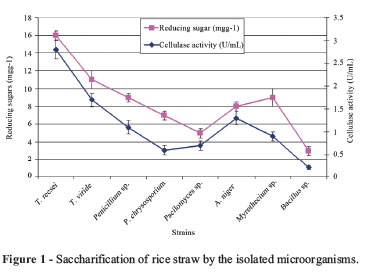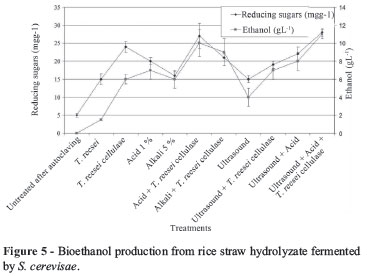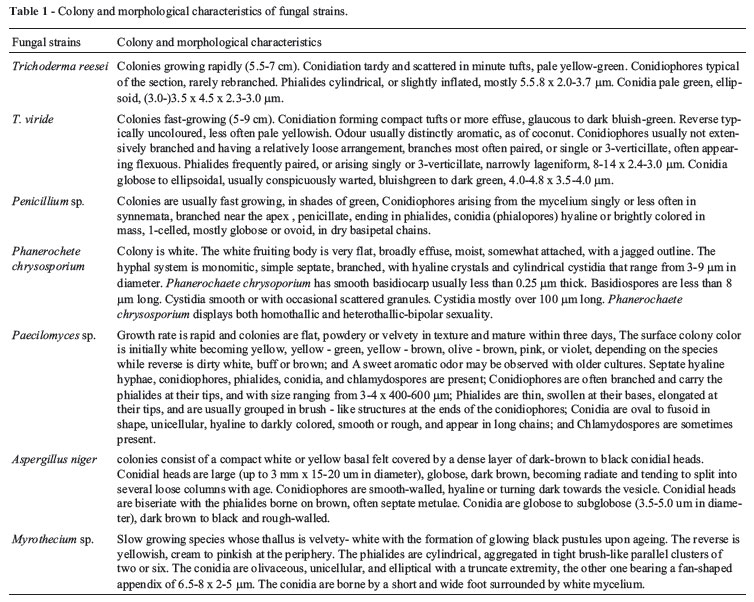A rice straw -cellulose utilizing mold was isolated from rotted rice straw residues. The efficient rice straw degrading microorganism was identified as Trichoderma reesei. The results showed that different carbon sources in liquid culture such as rice straw, carboxymethyl cellulose, filter paper, sugar cane bagasse, cotton stalk and banana stalk induced T. reesei cellulase production whereas glucose or Potato Dextrose repressed the synthesis of cellulase. T. reesei cellulase was produced by the solid state culture on rice straw medium. The optimal pH and temperature for T. reesei cellulase production were 6 and 25 ºC, respectively. Rice straw exhibited different susceptibilities towards cellulase to their conversion to reducing sugars. The present study showed also that, the general trend of rice straw bioconversion with cellulase was more than the general trend by T. reesei. This enzyme effectively led to enzymatic conversion of acid, alkali and ultrasonic pretreated cellulose from rice straw into glucose, followed by fermentation into ethanol. The combined method of acid pretreatment with ultrasound and subsequent enzyme treatment resulted the highest conversion of lignocellulose in rice straw to sugar and consequently, highest ethanol concentration after 7 days fermentation with S. cerevisae yeast. The ethanol yield in this study was about 10 and 11 g.L-1.
cellulase; Trichoderma reesei; rice straw residues; enzymatic hydrolysis; bioethanol







